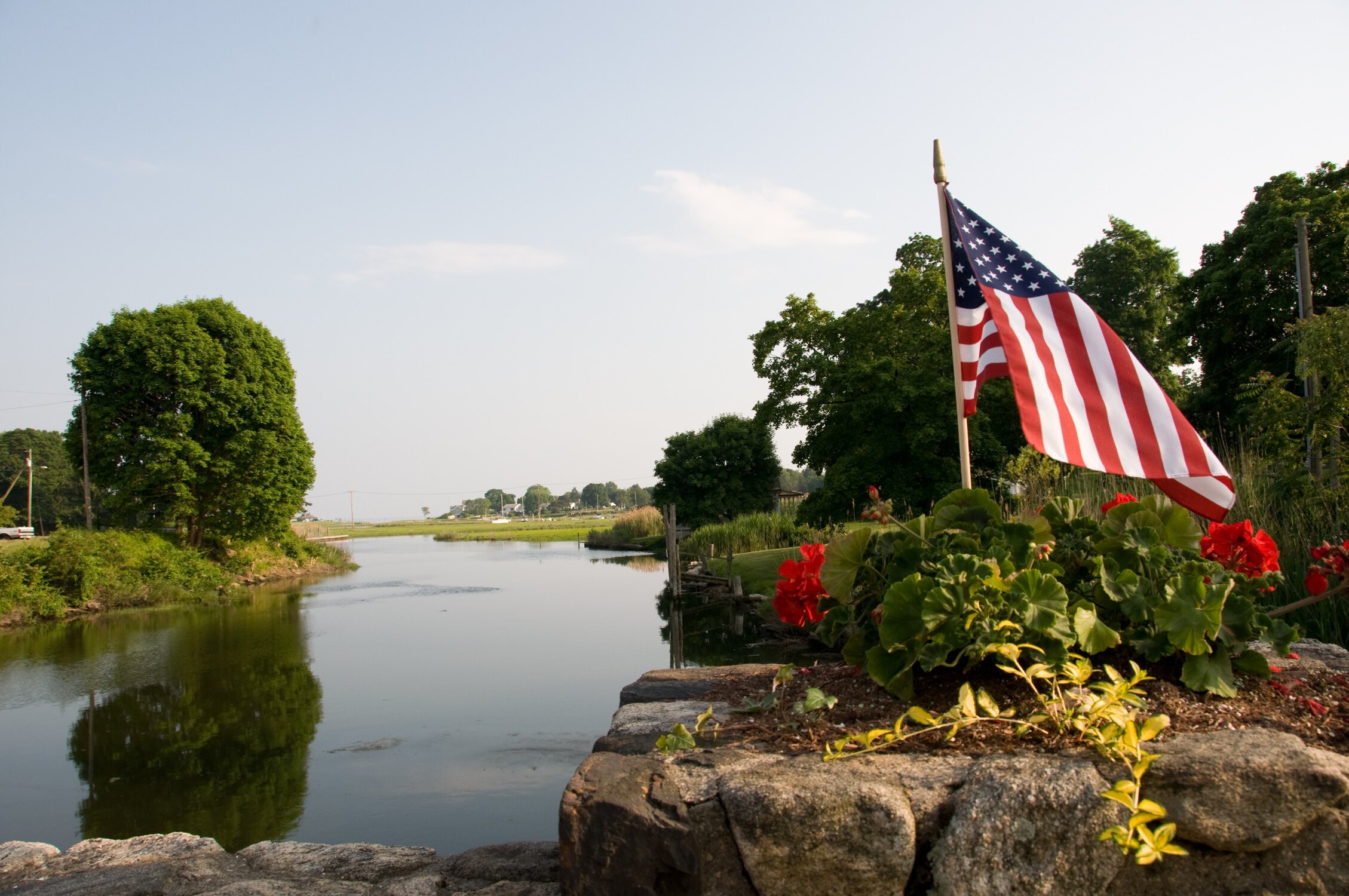
A Brief History of Clinton
Founded in 1663 on land that had been home to the Homenoscitt people, the town of Clinton originally encompassed the area that includes the present towns of Clinton and Killingworth. The town's original name was Homenoscitt Plantation but in 1667 the Court of Election at Hartford changed the name to Kenilworth, probably at the request of Edward Griswold, one of the town's first settlers, who had originally emigrated from Kenilworth, England. Over time, due to the vagaries of spelling and pronunciation, the town became known as Killingworth.
In granting permission for creation of the new settlement, the government in Hartford required that at least thirty families settle in the town and that provision be made for the support of a minister. Bryan Rossiter of Guilford laid out thirty equitable plots along what is today Main Street between Route 81 and Route 145. Each of the original thirty residents received three parcels: a plot on which to build a house; a salt marsh on which they could grow salt hay to feed their animals; and a wood lot from which wood could be cut for heat, housing, and cooking.
Although the settlers believed that legal title to the property had been granted by the state, they nonetheless purchased the land from the Mohegan/Pequot tribe in 1669. Uncas, the Sachem or chief of the Mohegans, sold the new inhabitants all but six acres of land within the town, and the tribes continued to live on what became known as "Indian Acres" off Commerce Street. The Mohegans also retained the rights to hunt in the woods, fish in the rivers, and use any trees they needed for canoes.
In 1694, Abraham Pierson was called to become pastor at the Congregational Church. Pierson was so well-respected that he was one of ten prominent ministers who were selected as trustees to form a new college. Although the trustees wanted to locate the college in Old Saybrook, Pierson refused to move there so the first classes for what was then called the Collegiate School were held in Clinton, in Pierson's home which was located on Main Street where the Stanton House now stands. Upon Pierson's death, the Collegiate School was moved to New Haven and was given a new name: Yale.
By 1734, the farmers who lived in the northern parts of Killingworth began talking about forming a new society, to ease the burdens of travel. For them, the five mile journey from their homes and farms in the "wilderness" -- in the north -- to the Congregational Church in the center of town was extremely difficult. Often they traveled on foot or on horseback, in bad weather, across minimal roads. Attendance at church was so integral to the life of the town that it was practically mandatory, so the northerners decided to separate from the southern portion of Killingworth, build their own church and meetinghouse, and form their own society. In 1838, Killingworth was officially divided into two towns. The northerners retained the name Killingworth, while the shoreline residents adopted the name Clinton, possibly in honor of Geoffrey de Clinton, Lord Chamberlain and Treasurer of England during the 12th century, whose manor and castle are located in Kenilworth, England.
Clinton's history continued to blossom with visits from none other than Benjamin Franklin, Colonial Postmaster General, who personally determined the site of a Boston Post Road milestone marker on Main Street. The milestone marked the distance -- 25 miles -- from that spot to New Haven. As Clinton thrived, hundreds of trading ships were built and launched from Clinton’s shipyards and the Ponds Extract Company (now part of Unilever) set up shop in town to harvest, process, and bottle witch hazel. For generations, vacationers, artists, and year-round residents have found pleasure and a deep community spirit at our shore. Since 1938, the Clinton Historical Society has researched, recorded, and shared stories of Clinton’s past. To learn more, please visit our library and archives, a rich resource for information about the history of our town.